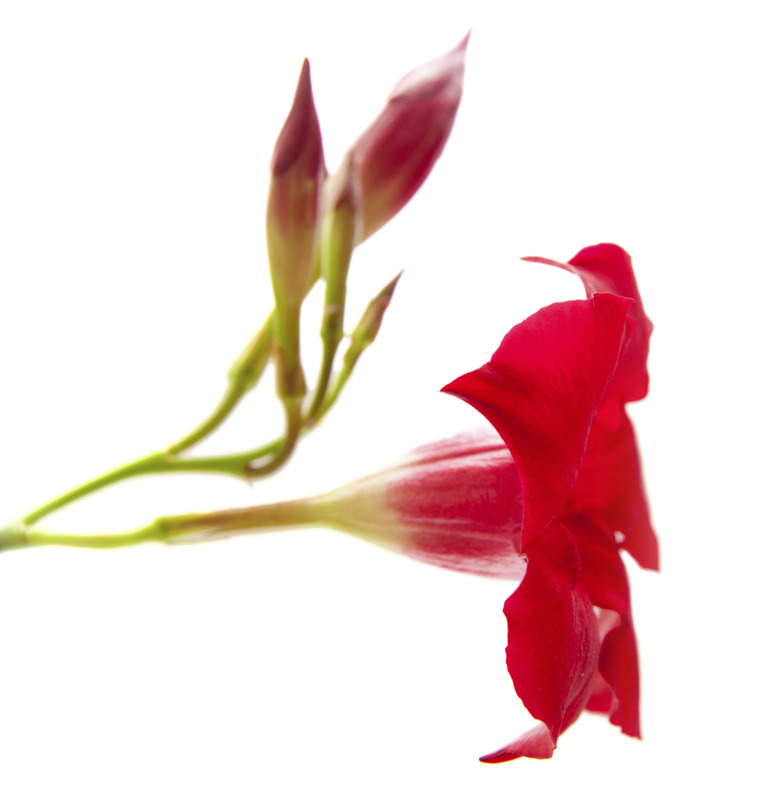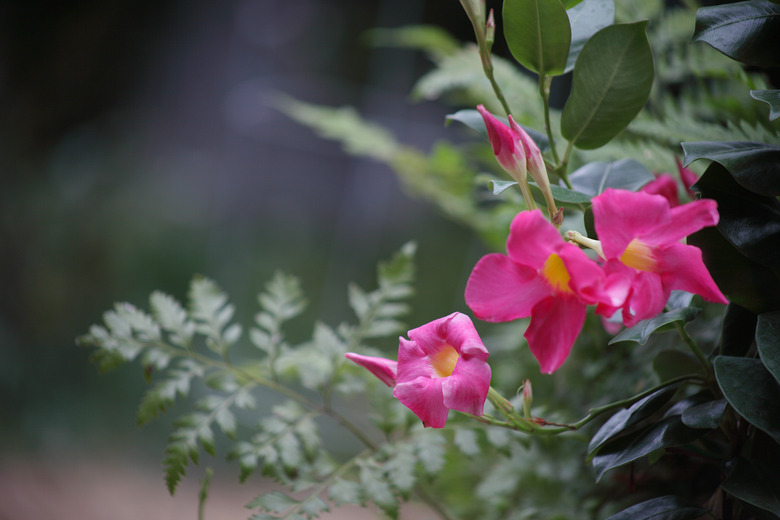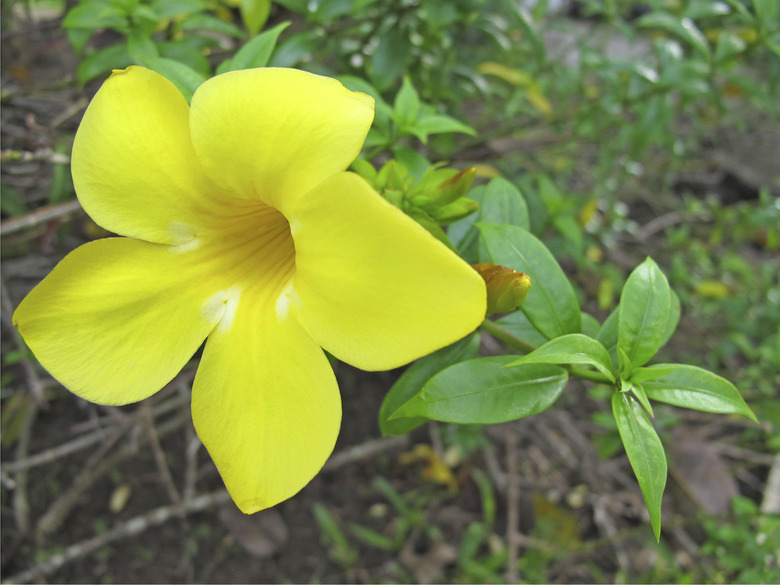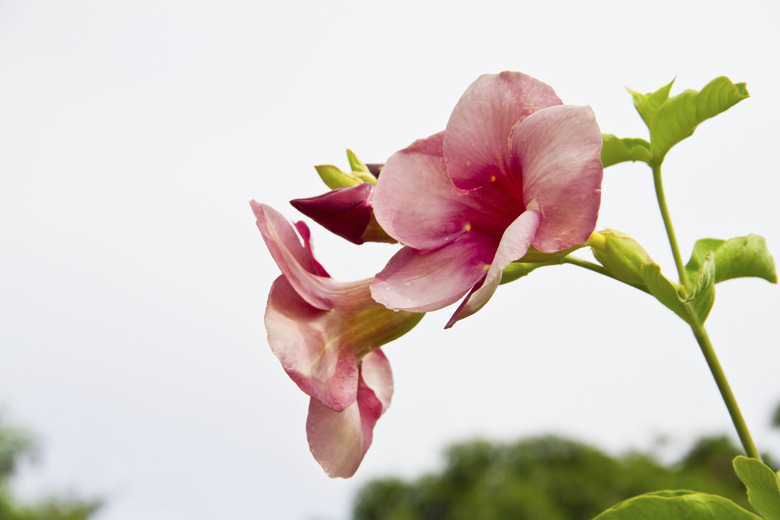Differences Between Mandevilla And Dipladenia Plants
Dipladenia and mandevilla are often confused with each other because the shape and colors of the flowers on both plants are similar. Nevertheless, there are distinguishing differences between these two tropical plants — how each grows, their foliage and even their flowers will define the specific plant you are growing.
Growth
Growth
Mandevillas have a tendency to vine and are frequently marketed growing in a pot with a trellis that supports the vine(s). A dipladenia plant can also be grown in a pot. However, it is not inclined to vine and grows instead into a small bush. Occasionally, you will find a dipladenia trained to grow as a short vine, but never to the extent that a mandevilla does.
Foliage
Foliage
The foliage, or leaves, of each plant will let you know which plant you are growing. Mandevilla leaves are longer and narrower than dipladenia leaves, which are wider and heart-shaped. Dipladenia leaves have a thicker, leathery, smooth feel, while mandevilla leaves feel rough and textured.
Flowers
Flowers
At first glance, the flowers of mandevilla and dipladenia may look the same. If you compare these flowers, you will notice that dipladenia flowers are quite a bit smaller than mandevilla flowers. Originally, dipladenias produced flowers that were light pink; today, there are more than 100 dipladenia species that produce red, white, yellow and pink blooms. Mandevilla flowers generally come in shades of red (although it is possible to find mandevilla plants that produce pink, yellow and white blooms).



